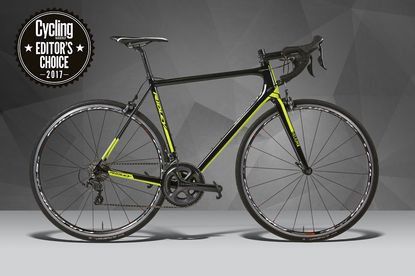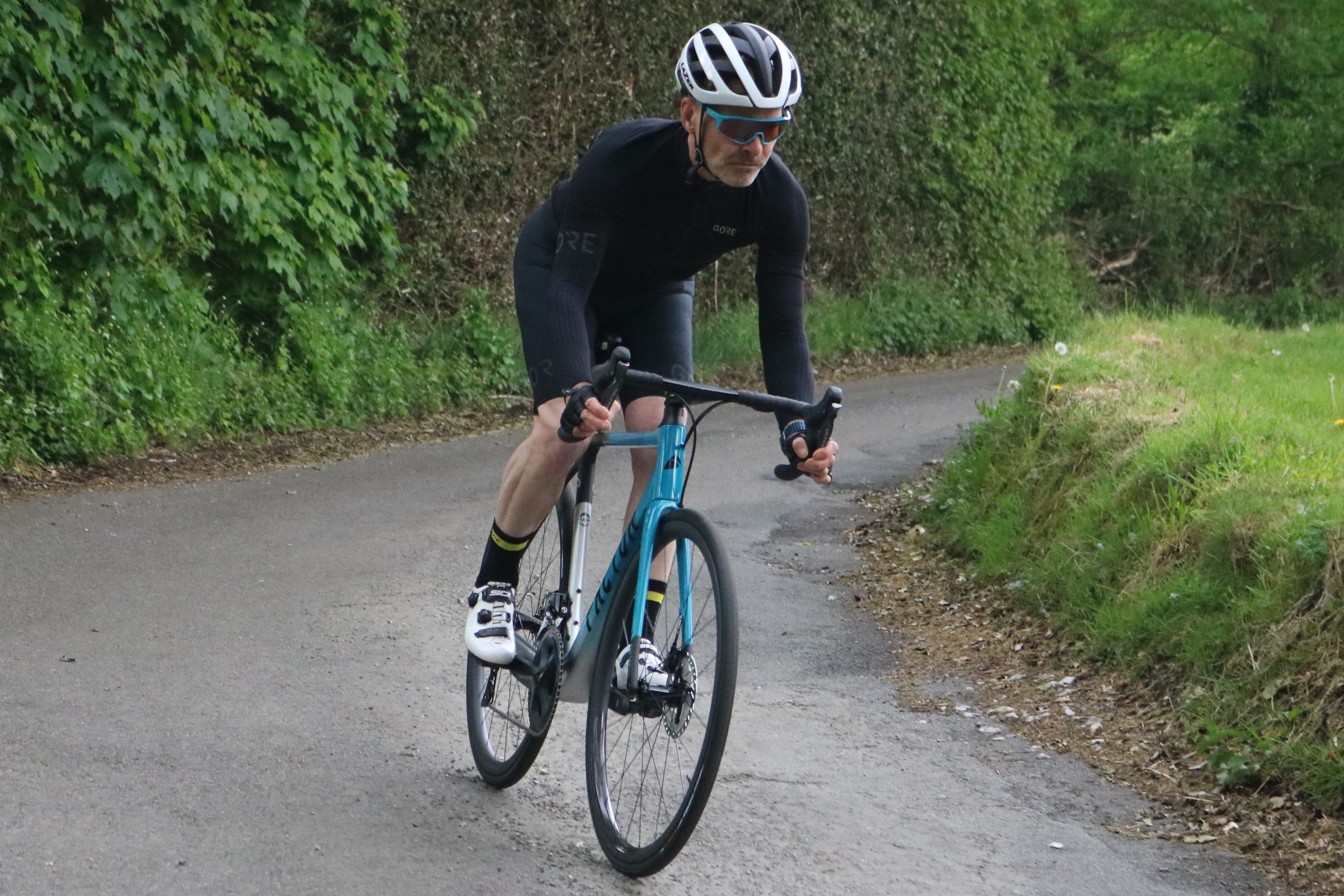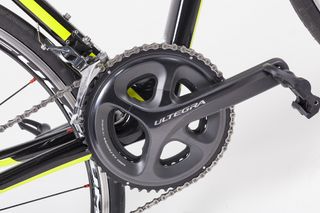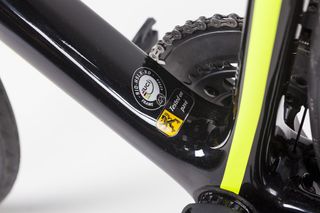Ridley Helium X review
The Helium X gives you the same frame geometry as Ridley's premium Helium SLX climbing bike, but in a cheaper package

You can trust Cycling Weekly.

The Ridley Helium X is Ridley's lightweight climbing bike, which is a featherweight in the hills yet easily stiff enough to make it in a GC bunch sprint. It's this performance attitude that gains the Ridley Helium X a spot on Cycling Weekly's Editor's Choice for 2017.
The Ridley Helium X comes out of the same mould as the Helium SLX, the bike of choice for Thomas de Gendt, but it’s made of a mix to 30T (30 tonne) and 24T high modulus carbon rather than the Helium SLX’s 60T-40T-30T higher-modulus mix.
This makes the frame a touch heavier than the GC contending SLX model, and as a result less expensive, bringing down the Helium X’s overall price tag. Regardless of the carbon mix, this test bike still weighs a competitive 7.5kg.
The Ridley Helium X is a lightweight frame with a robust head tube/down tube junction and chunky chainstays for power delivery. The comparatively skinny seatstays are designed to add some cushioning for extra ride comfort. Ridley uses threaded external bottom bracket bearings for more efficient running and ease of maintenance.

The head tube is a bit taller than on some race machines, although the stack means that the ride position remains low, again reflecting the Helium X’s big brother’s pro race credentials.
The 72° head tube angle and 96.9cm wheelbase on the size 54 tested are quite aggressive, leading to handling that is more edgy than relaxed.
Like the frame, the Helium X’s fork is all carbon and made of the same high-modulus 30T-24T mix.
A quality spec
The bike comes with a full Shimano Ultegra groupset, excluding the chainset, which is replaced by a Rotor 3D30 chainset and brakes. With its semi-compact 52/36 rings and 11-28 cassette, there’s plenty of range for faster riding as well as the uphills. As you’d expect from Ultegra, the shifting is faultless and the braking effective.

Although they’re not a premium wheelset, the Forza RC23 wheels have a quality build and are deep enough to give a sporty look to the bike. The Vittoria Zaffiro Pro tyres give plenty of air volume, a wide stance to the sidewalls and a comfortable ride. With the extra volume, you can also lower the tyre pressure to add comfort.
Ridley’s in-house component brand, Forza, sells a comprehensive range of finishing kit and the Helium X makes use of this, with a Forza alloy cockpit, carbon seatpost and saddle.
Lively in the hills
The Ridley Helium X shows its racing credentials in a lively ride, which makes you want to ride faster and put its handling to use. With the stem slammed, the ride position is racy enough to put you quite long and low, although there are spacers to get the bars 4.5cm higher if you prefer.
Although it feels fast, the Helium X isn’t a handful to pilot and is quite happy ridden rapidly on faster flats and descents. There’s plenty of rigidity to the bottom bracket and chainstays too, so you can put the power down and climb effectively.

Although billed as a lightweight machine, that rigidity does mean that the Helium X is a bit less plush than some alternatives. It's not uncomfortable, there's just more ride feel, in many ways making you feel more connected with the bike.
At close to £3,000 in Ultegra spec, the Ridley Helium X is also a bit more expensive than some alternatives. But for your money you are getting a WorldTour-level frame tested by Thomas de Gendt and others on the Lotto-Soudal team.
And Ridley has built the Helium X with a range of quality components. Not just the full Shimano groupset, but the wheels and own-brand finishing kit befit a premium machine too.

Thank you for reading 20 articles this month* Join now for unlimited access
Enjoy your first month for just £1 / $1 / €1
*Read 5 free articles per month without a subscription

Join now for unlimited access
Try first month for just £1 / $1 / €1
Get The Leadout Newsletter
The latest race content, interviews, features, reviews and expert buying guides, direct to your inbox!
Paul started writing for Cycling Weekly in 2015, covering cycling tech, new bikes and product testing. Since then, he’s reviewed hundreds of bikes and thousands of other pieces of cycling equipment for the magazine and the Cycling Weekly website.
He’s been cycling for a lot longer than that though and his travels by bike have taken him all around Europe and to California. He’s been riding gravel since before gravel bikes existed too, riding a cyclocross bike through the Chilterns and along the South Downs.
-
 Among market turmoil, Colnago boasts €55 million in sales: CEO shares the brand’s secret
Among market turmoil, Colnago boasts €55 million in sales: CEO shares the brand’s secretColnago’s growth has tripled since the brand’s acquisition by new majority stakeholders in 2020 and seems impervious to the downturn. Here's why.
By Anne-Marije Rook Published
-
 2.28km in 2:55: The Tour de Romandie prologue which was over in a flash
2.28km in 2:55: The Tour de Romandie prologue which was over in a flashMajority of riders opted for road bikes on technical course around the Swiss city of Payerne
By Adam Becket Published
-
 Bike rental schemes hit record numbers in the UK, almost topping 25 million hires
Bike rental schemes hit record numbers in the UK, almost topping 25 million hiresAn average of 67,565 rides were taken a day between September 2022 and September 2023, an increase of 24%
By Adam Becket Published